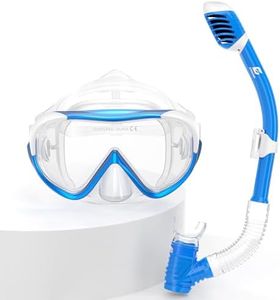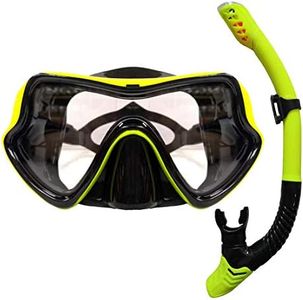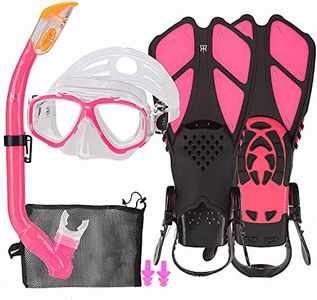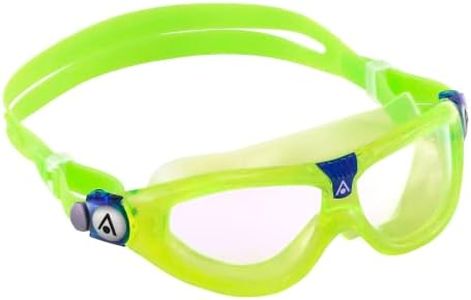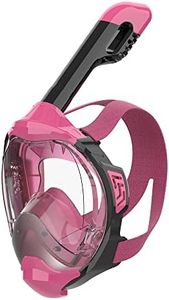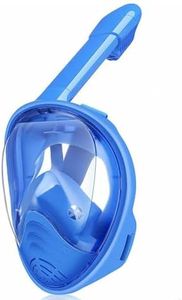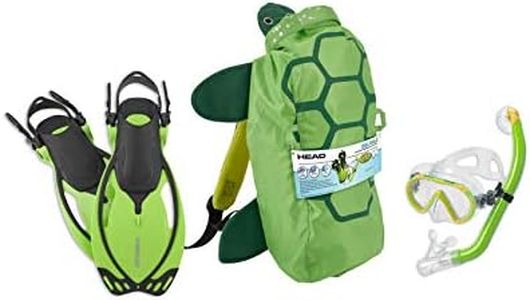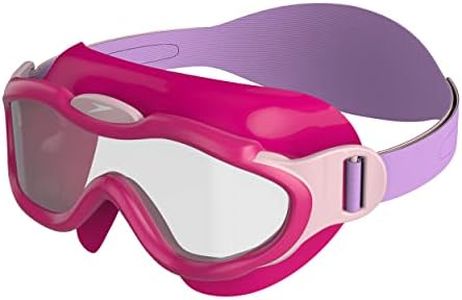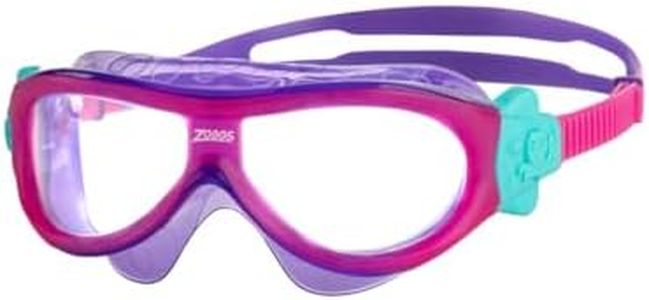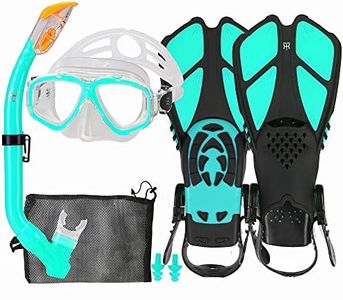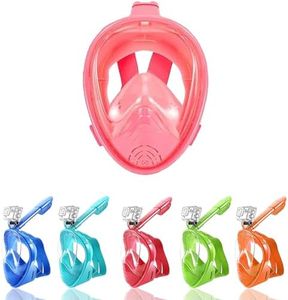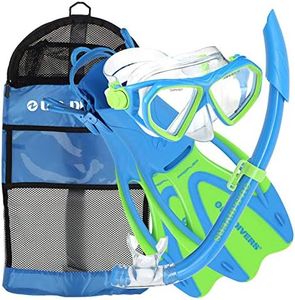We Use CookiesWe use cookies to enhance the security, performance,
functionality and for analytical and promotional activities. By continuing to browse this site you
are agreeing to our privacy policy
10 Best Scuba Mask For Kids
From leading brands and best sellers available on the web.Buying Guide for the Best Scuba Mask For Kids
Choosing the right scuba mask for kids is essential to ensuring safety, comfort, and a fun underwater experience. The right mask helps create a watertight seal, allows for clear vision, and fits a child’s face properly. Kids have different needs than adults, so it’s important to focus on features that will cater to their comfort and ease of use rather than just picking a smaller version of an adult mask.Fit and SealFit and seal refer to how well the mask sits on the face and prevents water from leaking in. This is crucial because a poor seal can let water enter, making kids uncomfortable or even scared underwater. Children’s faces are smaller and shaped differently from adults, so kid-specific or youth sizes are usually necessary. When navigating fit, look for masks labeled for children or youth, and if possible, test the mask by placing it on the child’s face without using the strap—ask them to gently inhale through their nose; a good-fitting mask will stay on the face. Every child’s face is unique, so a snug but not tight fit is best for comfort and a reliable seal.
Lens Type and VisibilityThe lens is the clear part you see through, and its type affects both strength and field of vision. For kids, you’ll usually find single-lens, dual-lens, or even wide-view options. Single-lens masks often provide a more open feeling and wide view, while dual-lens masks may fit smaller faces better. Some masks use tempered glass, which is strong and resists scratches, while others use plastic, which is lighter but may scratch more easily. Choosing a mask with a wide field of view and tempered glass is generally safer and more enjoyable for kids who want to see more underwater. If a child is especially active or rough with their gear, durability in the lens becomes more important in your selection.
Skirt MaterialThe skirt is the part of the mask that makes contact with the face, forming the seal. It is usually made from silicone or rubber. Silicone is preferred for children because it is softer, more flexible, and less likely to cause skin irritation, especially for long periods. When choosing, look for masks with a high-quality, hypoallergenic silicone skirt for comfort and a better seal. Children with sensitive skin or who will spend a lot of time snorkeling or diving will especially benefit from silicone skirts over older-style rubber.
Strap AdjustabilityThe strap holds the mask on the head and needs to be easily adjustable. Kids’ heads vary greatly in size, and sometimes they grow quickly, so an adjustable strap ensures a good fit over time. Look for masks with wide, soft straps and simple adjustment mechanisms like quick-release or pull buckles, so kids (or parents) can adjust the fit easily, even with wet or cold hands. If your child will use the mask for a couple of years or share with siblings, extra adjustability is particularly useful.
Volume and Ease of ClearingMask volume refers to the amount of air space inside the mask. Lower volume masks are easier for kids to clear (remove water from) by simply blowing out through their nose, which is a common skill needed in snorkeling and diving. Low-volume masks are more compact and closer to the face, making them easier for children to manage. For those new to snorkeling or diving, a lower-volume mask is generally recommended, as it makes learning underwater skills less intimidating and more manageable.
Comfort and WeightComfort and weight play a big role in whether a child will enjoy using their mask. Heavy or bulky masks can feel awkward or cause discomfort, especially after long wear. Lightweight masks with soft skirts and wide straps distribute pressure evenly around the face and head. When selecting a mask, consider how long your child will be using it at a stretch, and opt for the lightest and most comfortable one they can try on—this will help them focus on the fun, not on adjusting their gear.
